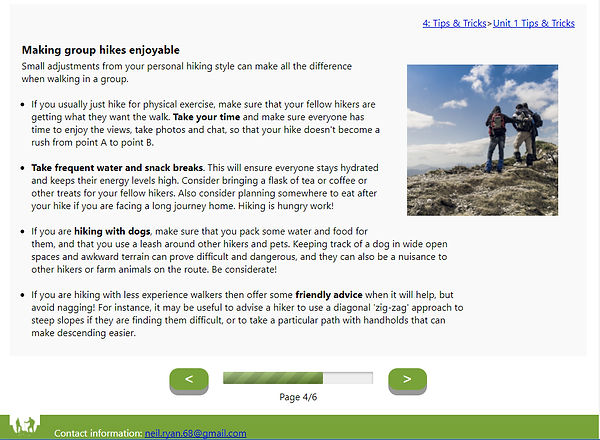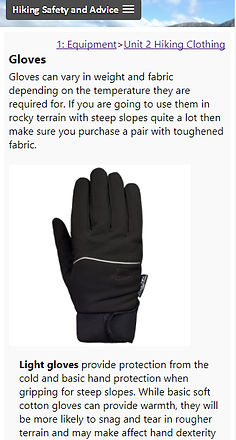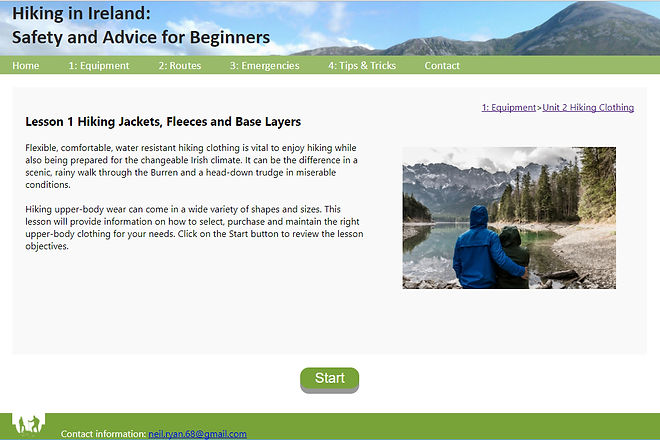MA Practical Dissertation Project:
E-Learning Website on Hiking Skills
This project represented the conclusion of my MA studies and was an opportunity to demonstrate all that I learned throughout the course.
The project comprised of:
-
a project proposal including user needs analysis, extant analysis, media specification and design prototyping phases
-
a website designed to house the learning content and provide an intuitive and pleasant UI to meet audience needs
-
learning content written and structured to incorporate instructional design and technical writing principles
-
a usability test conducted with five participants to refine an early sprint of the project
-
a report outlining the research that informed the project's development along with a description of final findings and recommendations.
The website files and accompanying report are available on Google Drive.
Web and Visual Design Skills
Adobe XD was used to help build wireframes of the site and plan the overall structure. Adobe Dreamweaver was the main development tool for the website and was used to create over 120 pages of content. The website's HTML and CSS was created from the ground up with the addition of Slicknav CSS and Javascript to help create the mobile menus and quiz functionality. Adobe Photoshop was used to create custom graphics and edit imagery. Adobe InDesign was used to create the accompanying downloadable Pdf files.
The design section of the report details the UX principles, and navigation, font and colour choices that informed the final user interface and content design. Research by Jakob Nielsen, contributors at the Nielsen Norman Group, and Vai and Soluski in particular provided a framework for an intuitive and functional user interface. The navigation structure follows standard web design practices to ensure user familiarity, and incorporates responsive design to allow functionality on mobile devices. Web safe fonts such as Segoe UI and complementary colour schemes are used throughout.
Instructional Design and Technical Writing
The project follows an ADDIE and constructivist instructional design framework to create and structure the course. The project maintains an approachable writing style throughout to match the broad audience profile identified in the project proposal. The course structure combines a 'sequence of events' with a 'simple to complex' approach to create an authentic and logical sequence of learning content.
Usability Testing
A usability test was performed after an early sprint in the project's development to refine the overall content and functionality of the website. Five participants participated in the testing sessions and had their interactions with the website recorded on the Lookback App. The participants performed authentic tasks and helped to fine-tune the overall functionality and presentation of the content.
Project Report
The dissertation report required applying research and writing skills to condense multiple sources into a comprehensive but concise overview of the design, development and usability principles which informed the final project.
Summary
This project helped to improve my overall design and writing skills and the many different challenges posed when creating a top to bottom e-learning course. It proved to be an extremely rewarding and enjoyable experience that encapsulates my skills in both technical and editorial spheres.





